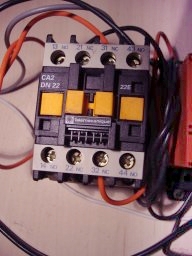
Photo from wikipedia
A new group of carbon nanomaterials modified with poly(3-octylthiophene-2,5-diyl) for solid-contact layers in ion-selective electrodes was obtained. The materials were characterized by scanning electron microscopy and measurement of the contact… Click to show full abstract
A new group of carbon nanomaterials modified with poly(3-octylthiophene-2,5-diyl) for solid-contact layers in ion-selective electrodes was obtained. The materials were characterized by scanning electron microscopy and measurement of the contact angle. The modification greatly improved the hydrophobicity of the materials, and the highest contact angle (175°) was obtained for a polymer-modified carbon nanofibers/nanotube nanocomposite. The electrical parameters of the electrodes were determined using the methods of chronopotentiometry and electrochemical impedance spectroscopy. The highest electrical charge capacity was obtained for polymer-modified carbon nanofibers (7.87 mF/cm2). For this material, the lowest detection limit (10−6.2 M) and the best potential reversibility (SD = 0.2 mV) were also obtained in potentiometric measurements.
Journal Title: Membranes
Year Published: 2022
Link to full text (if available)
Share on Social Media: Sign Up to like & get
recommendations!